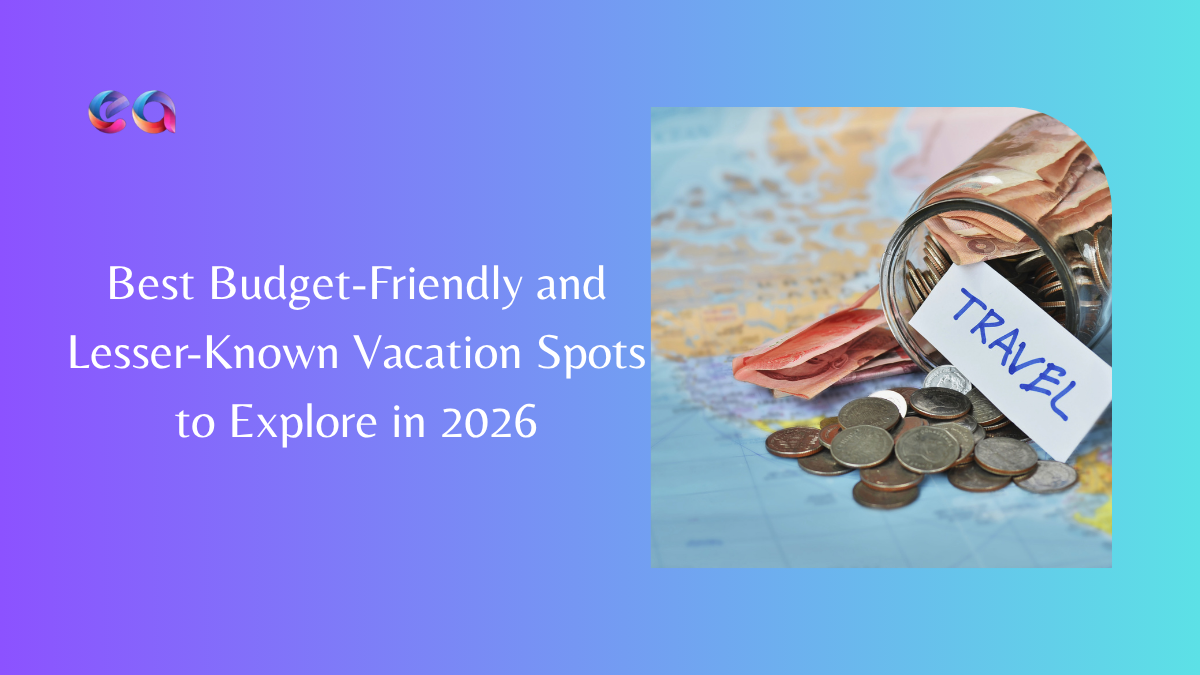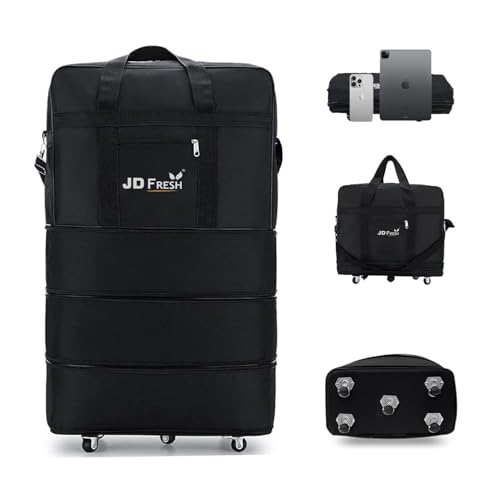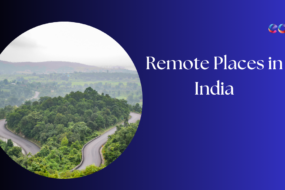
Looking for family-friendly destinations beyond the usual hotspots? In 2026 we expect hidden gems – not overcrowded tourist cities – to shine. These are affordable places where families can enjoy nature, culture, and light adventure without breaking the bank. For example, travel experts call Albania an “underrated gem” with pristine landscapes and vibrant culture, yet affordable. One blogger even raves that Albania’s Riviera has “prices so low they make Thailand look expensive”. Similarly, lesser-known spots like Bacalar in Mexico or Vang Vieng in Laos offer world-class scenery (crystal-clear lagoons, jungle rivers) at a fraction of the usual cost. Throughout the sections below, we’ll highlight emerging 2026 destinations that deliver big experiences – from enchanted castles to rainforest retreats – while remaining budget-friendly and fun for kids.
Table of Contents
Hidden European Getaways
- Brașov, Romania. A medieval city in the heart of Transylvania, Brașov charms with cobblestone streets, a Gothic church, and mountain scenery. Families can explore the nearby Bucegi Mountains, hike to Poiana Brașov ski resort, or visit Bran Castle (“Dracula’s Castle”) just outside town. Importantly, Brașov is much cheaper than Western Europe: budget travelers spend on average only about $37/day here. In fact, Romania’s medieval towns often rank among Europe’s most affordable, making Brașov ideal for family adventures on a budget. Between castle tours and cable-car rides, even picky teens will stay engaged – and dinner of traditional sarmale (stuffed cabbage) at a local eatery is very wallet-friendly.
- Albanian Riviera (Dhermi, Sarandë, Ksamil). Europe’s “best-kept secret” for beach holidays, the Albanian Riviera offers crystal-clear Adriatic waters and empty, sandy coves that rival more famous Greek beaches – but at a fraction of the cost. As one travel guide notes, Albania is “affordable” and an “underrated gem” for families. Here you can mix seaside fun with culture: explore Roman- and Ottoman-era towns (like the UNESCO site of Butrint), kayak through sea caves, or hike the Llogara Pass overlooking mountains and coast. Accommodation ranges from guesthouses to mid-range hotels, often under $50/night. Overall budgets hover around $40/day for budget travelers. The shoulder seasons (spring and fall) bring warm weather and smaller crowds, but even summer months remain far cheaper than Southern Europe alternatives – imagine enjoying seafood and sweet local wine for much less than in Italy or Greece.
- Sarajevo, Bosnia and Herzegovina. Rich in history and culture, Sarajevo is a safe, vibrant city where East meets West. Kids will marvel at walking the Ottoman bazaar (Baščaršija) or seeing the 16th-century Gazi Husrev-bey Mosque. Learn about recent history at the Tunnel Museum (kids over 10 often find the story of the city’s siege eye-opening but educational). For a family outing with great views, take the cable car up Mount Trebević. And families find Sarajevo very economical: budget travelers spend about $40/day on average. Almost everything from meals to museums costs only a few dollars – for example, public transit and many attractions have low fees. This means even small households can explore freely. (Tip: the city’s mustard-colored tram and warm bosanski ćevapi sandwiches in the old town are must-tries.)
- Georgia (the country). The Caucasus jewel of Georgia is becoming a hot travel pick for its mountains, wine, and legendary hospitality. Historic Tbilisi’s winding alleys and sulfur-bath districts are fun to wander, and just a day trip away are the Kazbegi mountains and the cave city of Uplistsikhe. Families will love easy mountain hikes or sampling Kakheti’s famous sweet white wines (grape juice for the kids!). Budgetwise, Georgia is impressively cheap – $14–38/day across budget to mid-range travel, ranking it among the world’s most affordable countries. You’ll find guesthouses and apartments from under $20/night, and hearty local meals (khachapuri cheese bread or khinkali dumplings) for a couple dollars. Best time to go is late spring or early fall, when the weather is mild for sightseeing and vineyard visits.
- 𝗗𝘂𝗿𝗮𝗯𝗹𝗲 & 𝗪𝗮𝘁𝗲𝗿-𝗥𝗲𝘀𝗶𝘀𝘁𝗮𝗻𝘁 𝗙𝗮𝗯𝗿𝗶𝗰: Crafted from 𝐬𝐨𝐟𝐭 𝐰𝐚𝐭𝐞𝐫𝐩𝐫𝐨𝐨𝐟 𝐧𝐲𝐥𝐨𝐧 𝐟𝐚𝐛𝐫𝐢𝐜, this travelling bag is tear-resistant and k…
- 𝟯𝟲𝟬° 𝗥𝗼𝘁𝗮𝘁𝗶𝗻𝗴 𝗪𝗵𝗲𝗲𝗹𝘀 𝗙𝗼𝗿 𝗘𝗮𝘀𝘆 𝗠𝗮𝗻𝗲𝘂𝘃𝗲𝗿𝗮𝗯𝗶𝗹𝗶𝘁𝘆: This luggage bag glides effortlessly through crowded spaces with five 360…
- 𝟯-𝗧𝗶𝗲𝗿 𝗘𝘅𝘁𝗲𝗻𝗱𝗮𝗯𝗹𝗲 𝗗𝗲𝘀𝗶𝗴𝗻: Extendable luggage is designed with 3 flexible storage layers: choose from 24″, 30″, or 35″ as…
Underrated Asian Escapes
- Vang Vieng, Laos. Once known for wild backpacker parties, Vang Vieng has transformed into a serene riverside haven perfect for families who like a bit of adventure. Towering limestone karst peaks and jungle fringes surround this small town on the Nam Song River. Kids can splash in the “Blue Lagoon” pools, explore caves like Tham Chang, or float downriver in inner tubes. A full-day guided kayak trip, which includes cave visits and a barbecue lunch, runs about $50 total for an entire family (guides provide life vests and training so all ages can join). Guesthouses are extremely inexpensive – the author notes “accommodation was so cheap that we could allow for treats”. By night Vang Vieng is very quiet, so families stay relaxed. The best season is November–March (dry season) to avoid monsoon rains. Overall, Vang Vieng combines jungle fun and riverside relaxation in a way few places do, all at very low cost.
- Mui Ne, Vietnam. This laid-back coastal village in southern Vietnam is a unique combo of sun, sand, and local culture. Mui Ne is one of Vietnam’s sunniest spots, fronted by a wide bay and framed by stunning red and white sand dunes that kids can sand-sled down. During the day, families can rent bikes or scooters to explore fairy-tale streams and nearby fishing piers. At sunset, the dunes’ colors are spectacular. Accommodation is plentiful and cheap (you’ll find beachfront bungalows under $30/night). Vietnam as a whole is noted for its affordability, so budget travelers can expect very low food and transport costs. Plan to visit between November and April for sunny beach weather. (Pro Tip: in Mui Ne, try the fresh seafood BBQ on the beach – it’s delicious and a great cultural experience.)
- Sri Lanka. A compact island rich in diversity, Sri Lanka is perfect for families who want beaches, history and wildlife all in one trip. Imagine exploring ancient rock fortresses by day (like Sigiriya’s Lion Rock), then spotting elephants on safari in Yala National Park the next, with a side of tropical beach time at Unawatuna. The country has modern infrastructure but remains very affordable – budget travelers average only $22/day. Trains and buses are safe and cheap, making it easy to zigzag the island. And Sri Lanka was recently named a top 2026 pick for its “rich heritage beyond the usual tourist trails”. The best season is January–March (southwestern dry season) for most areas, or June–September in the drier east (Trincomalee) if you want to avoid crowds. In short, Sri Lanka packs a world of experiences – temples, tea plantations, surf beaches and dense jungles – into a child-friendly island that won’t bust the budget.
Tropical and Island Gems (Americas & Caribbean)
- Bacalar, Mexico. Tucked in the Yucatán Peninsula near the Belize border, Bacalar is a warm-water lagoon of unbelievably clear blue-green hues (hence the name “Lake of Seven Colors”). This lake feels like a Caribbean sea, with gentle swimming access and even water swings right at lakefront restaurants. Families can explore cenotes, rent kayaks, and tour islands on a small boat. Entry to public swimming spots is either free or only a few dollars. Tours of the lake (covering caves, the “Pirate Canal,” and cenotes) cost around £26 each (~$30), which can be shared by family members. Even tours include lunch, drinks and snorkeling gear – a great value for all-day fun. Accommodations are modest: one traveler reports lakefront hotels for about £40 (~$50) per night including breakfast. An overall daily spend (food and activities) of about $50 is typical, making Bacalar far more affordable than nearby resorts. Best time is November–April for dry weather, but even in summer months tourism is low. In short, Bacalar feels like a private paradise – with cenotes and fort ruins for culture – all on a family budget.
- Tobago (Trinidad & Tobago). For a less-touristy Caribbean island, consider Tobago – the smaller, greener sibling of Trinidad. Thanks to new flights from Miami, Tobago is becoming easier to reach. This island is nature paradise: it has the oldest protected rainforest on earth (Main Ridge) for easy jungle hikes, peaceful seven-mile Blue Flag beaches, and abundant birdlife (like scarlet ibis at Caroni Swamp). Kids can learn snorkel at Buccoo Reef or see turtles. The vibe is chill – there are far fewer resorts and crowds than other Caribbean islands. For families, package deals (including meals and tours) can still come in under mainstream prices. Budget travelers typically spend around $100–110 per day in Trinidad and Tobago, which is modest by Caribbean standards. Go in January–May for the best weather (but July–Nov still sees fewer tourists and cheaper rates, though with some rain). Travelers praise Tobago’s “unique environment” that forces you to “slow down” and enjoy simple pleasures – exactly the kind of relaxed family getaway families on a budget will love.
- Dominica. (Honorable mention in this region.) For families who love rainforest adventure, Dominica is a wild gem. Dubbed “the Nature Island,” Dominica survived hurricanes but bounced back with amazing deals on lodging. Here you can free-dive in an undersea volcanic crater, hike to the Emerald Pool waterfalls, or splash in hot springs – all amid lush jungle. One travel guide highlights its “natural beauty [that] makes it hard to stay away,” from clear diving waters to healing rainforests. Though not as budget-level as some other picks, clever travelers note there are off-season specials and basic guesthouses to keep costs down (around \$70+ per day). It’s a place to get unplugged and close to nature.
Africa & Indian Ocean Adventure
Madagascar. This huge Indian Ocean island is practically a natural theme park. Imagine seeing ring-tailed lemurs scampering around baobab trees at Avenue of the Baobabs, or chameleons on jungle treks – wildlife you literally can’t find anywhere else. The landscapes range from stone forests in Tsingy de Bemaraha to tropical beaches on Nosy Be. For families, affordable eco-lodges and guides are available; BudgetYourTrip notes Madagascar ranks in the world’s “top 25% for affordability”. Budget travelers report spending around $45/day here, which is low for Africa. The best time is April–November (dry season) to explore parks without rain. Kids will love the novelty of the wildlife, and parents will appreciate the endless parks and free beach days on a shoestring.
Top Destinations Comparison
For an at-a-glance comparison, the table below summarizes highlights and budgets. All these spots offer family fun without big-city crowds or prices:
(Estimated budgets are per person, based on budget travel; costs can vary by season and family size.)
Tips for Savvy Budget Family Travel in 2026
- Plan Off-Peak or Shoulder Seasons. Travel just before or after the high season to save on flights and hotels. Many of the spots above are gorgeous in spring or fall (e.g. Albania in May or Georgia in Sept), when prices dip and the weather is still great.
- Embrace Public Transport & Self-Guided Tours. Rely on local buses, trains or ferries instead of private tours. For instance, taking the ferry on Lake Koman (Albania) or local buses in Sri Lanka keeps costs low and lets kids interact with locals.
- Stay in Family Guesthouses or Apartments. A family-run guesthouse or apartment often costs less per person than multiple hotel rooms, and includes perks (homemade breakfast, playground). In Europe and Asia especially, budget stays can be clean and charming.
- Pack Smart Entertainment & Snacks. Bring a few travel games, books, or drawing kits so kids can be occupied during transit or downtime. Carry refillable water bottles and snacks to avoid expensive airport/convenience purchases.
- Book Free or Cheap Activities. Many cultures offer free festivals, markets, or natural parks. Plan some hike days, beach picnics, or city walking tours. In Brașov and Sarajevo you can wander old towns free; in Georgia and Laos, nature trails are everywhere at no cost.
- Encourage Responsible Budgeting. Include older kids in some cost decisions (e.g. budget shopping). Teach them about bargains (finding the cheapest family meal, splitting hostel dorms or sharing rooms to save). This makes them more invested and can defuse complaints.
- Use Local Currency and Cash. In small towns like Bacalar or Vang Vieng, carry enough local cash since ATMs may be scarce. [30] One guide even suggests “bring enough cash in Pesos for the trip” to Bacalar. Exchanging money carefully helps avoid high ATM or card fees.
- Stay Flexible with Itinerary. If a town unexpectedly has a free cultural day or the weather clears, be ready to adjust plans. Flexibility can lead to bonus cheap adventures (like a surprise village festival or impromptu snorkeling trip).
With creativity and a focus on authentic experiences, families can discover that budget travel in 2026 still means rich adventures and lifelong memories – without the crowds or big price tags. Wherever you choose, each of these destinations promises something special for budget-conscious families, proving that great travel can be both affordable and extraordinary. Happy exploring!
















